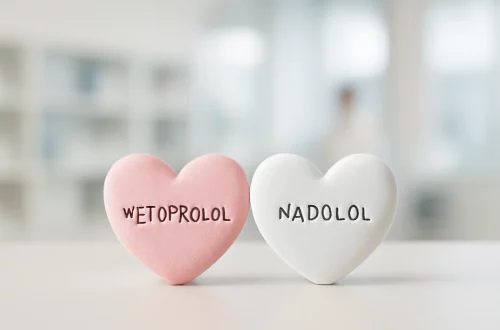
Exploring the Fascination with Big Penis Images and Their Impact
The human fascination with physical attributes is a subject that has intrigued societies for centuries. Among these attributes, the size of the penis has been a focal point of interest, often leading to discussions about masculinity, self-esteem, and sexual prowess. In various cultures, larger sizes have been associated with virility, power, and desirability, while smaller sizes are sometimes stigmatized, leading to an array of psychological and social implications.
This fascination is not merely anecdotal; it is reflected in media, art, and even science. The proliferation of images and representations of large penises in various forms, from pornography to memes, has contributed to the normalization of this obsession. The impact of these images extends beyond mere aesthetic appreciation; they influence perceptions of sexuality, body image, and even interpersonal relationships.
As we delve deeper, we will explore the psychological underpinnings of this fascination, the cultural narratives that shape our perceptions, and the implications for both individuals and society. Through a comprehensive examination, we aim to understand why images of large penises hold such a powerful allure and the effects they produce in a world increasingly influenced by digital imagery.
The Psychological Appeal of Size
The psychological implications surrounding the fascination with large penises are complex and multifaceted. For many individuals, particularly men, penis size can be a significant factor in shaping self-worth and identity. Studies have shown that men often equate size with masculinity and sexual ability, leading to a perpetual cycle of comparison and self-evaluation.
The roots of this belief can often be traced back to societal norms and expectations. In a culture that often glorifies physical attributes, media portrayals of idealized bodies exacerbate insecurities. When men are bombarded with images of large penises in adult films or even in mainstream media, it creates a benchmark that may feel unattainable. This can lead to feelings of inadequacy and anxiety, pushing some to seek out ways to enhance their size, whether through surgery, pills, or other methods.
Moreover, the psychological impact is not limited to men alone. Women are also affected by these norms, as they often internalize the belief that larger sizes equate to better sexual experiences. This can lead to unrealistic expectations in sexual encounters and contribute to dissatisfaction in relationships, as both partners may feel pressured to conform to these ideals.
In essence, the allure of large penis images taps into deep-rooted psychological themes of desire, validation, and societal approval. This fascination serves as a mirror reflecting broader issues of body image, self-esteem, and the pressures of conforming to an often unrealistic standard of masculinity.
Cultural Perspectives on Size
Cultural narratives play a significant role in shaping our perceptions of penis size. Across different societies, the symbolism and significance of size vary greatly. In some cultures, a larger penis is seen as a symbol of power and fertility, while in others, it may not hold the same importance.
For instance, in many Western societies, the portrayal of large penises in pornography has heavily influenced public perception. The adult entertainment industry has established a standard that many individuals feel pressured to meet, leading to a widespread belief that size is directly correlated with sexual success. This narrative is reinforced through various media forms, from movies to advertising, where large sizes are often equated with desirability and dominance.
Conversely, there are cultures where the emphasis on size is less pronounced. In many indigenous cultures, the focus may instead be on skill, emotional connection, or other attributes that contribute to sexual satisfaction. These varying cultural perspectives highlight the fact that the obsession with size is not universal but rather a product of specific social constructs.
The impact of these cultural narratives extends beyond mere perception; it shapes behaviors and attitudes toward sex and relationships. Individuals may find themselves navigating a landscape of expectations that can create tension and anxiety, particularly when these expectations clash with personal experiences or preferences. Understanding these cultural influences is crucial in dismantling harmful stereotypes and promoting a healthier dialogue around body image and sexuality.
The Digital Age and Its Influence
The rise of the digital age has transformed the way we interact with images and ideas about body image, particularly regarding penis size. The internet has become a vast repository of visual content, including a plethora of images depicting large penises. Social media platforms, adult websites, and forums have all contributed to the normalization of this fascination, creating a cycle of exposure that can reinforce existing beliefs and desires.
One of the significant shifts brought about by digital technology is the accessibility of such content. Unlike previous generations, individuals today are exposed to diverse representations of bodies at an unprecedented scale. This constant exposure can lead to desensitization, where the initial shock or fascination fades, prompting individuals to seek out even more extreme representations to elicit a response.
Moreover, the anonymity provided by the internet allows users to explore their fantasies and insecurities without fear of judgment. This can create a double-edged sword; while it offers a space for exploration, it can also foster unhealthy obsessions. For some, the pursuit of the ‘ideal’ image can lead to dissatisfaction with their own bodies, as they may increasingly compare themselves to the often unrealistic representations they encounter online.
In addition, the prevalence of memes and humorous content surrounding penis size has contributed to a cultural dialogue that can either reinforce or challenge existing beliefs. While some may use humor to diffuse tension around the topic, others may find that it perpetuates harmful stereotypes and expectations.
Ultimately, the digital age has amplified the fascination with penis size, creating a landscape where perceptions are constantly shaped and reshaped. As individuals navigate this complex environment, it becomes essential to foster critical thinking and self-acceptance, encouraging a more inclusive understanding of body image and sexuality.
Implications for Relationships and Self-Esteem
The fascination with penis size has profound implications for both personal relationships and individual self-esteem. As societal pressures mount regarding what constitutes an ‘ideal’ size, individuals may find themselves grappling with insecurities that impact their interactions with partners.
For many men, the belief that their worth is tied to size can create significant stress in intimate relationships. This pressure may lead to performance anxiety, where the fear of not meeting expectations overshadows the natural dynamics of physical intimacy. As a result, men may become hyper-focused on size rather than enjoying the experience of connecting with their partner, which can detract from the overall quality of the relationship.
Women, too, may feel the effects of this obsession. The belief that larger sizes equate to better sexual experiences can create unrealistic expectations, leading to dissatisfaction when those expectations are not met. Furthermore, the stigma surrounding smaller sizes can foster an environment where open communication about preferences and desires is stifled.
The implications extend beyond individual relationships; they can also influence broader societal attitudes toward masculinity and sexuality. By perpetuating the idea that size is paramount, society can inadvertently marginalize those who do not conform to these standards, leading to a cycle of shame and insecurity.
Encouraging open dialogue about body image, intimacy, and self-acceptance is crucial in addressing these issues. It’s essential for both partners to communicate their needs and desires, allowing for a more holistic understanding of sexual satisfaction that transcends mere physical attributes. By fostering an environment where all bodies are celebrated, individuals can cultivate healthier relationships and a more positive sense of self-worth.
In conclusion, the fascination with big penis images is a multifaceted issue that encompasses psychological, cultural, and relational dimensions. As we navigate a world increasingly influenced by digital imagery, it’s vital to approach these topics with sensitivity and understanding, fostering a dialogue that promotes self-acceptance and challenges harmful stereotypes.
**Disclaimer: This article is for informational purposes only and does not constitute medical advice. For any health-related concerns, please consult a qualified healthcare professional.**




